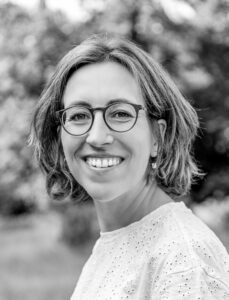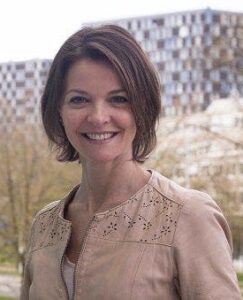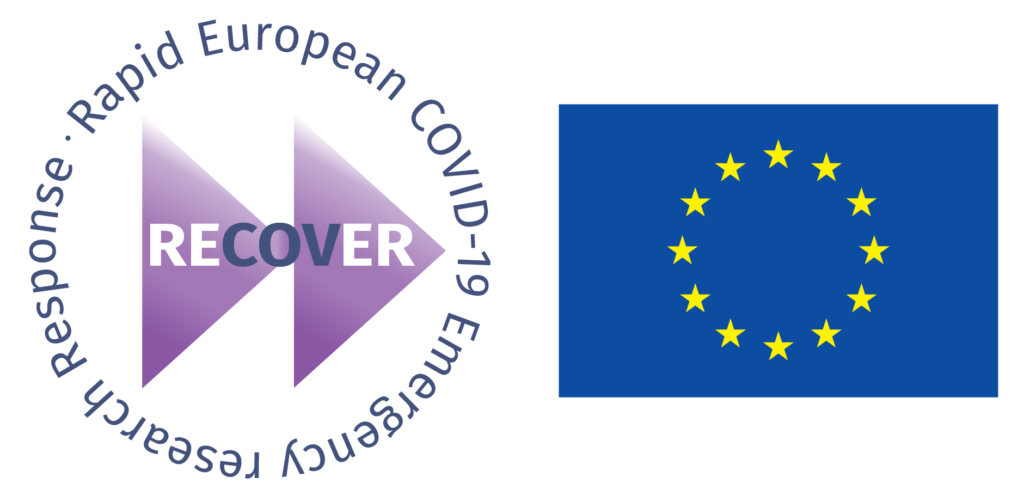16 May 2023
Marieke de Hoog, epidemiologist and assistant professor at the UMC Utrecht, and dr. Patricia Bruijning, paediatrician, epidemiologist and associate professor at UMCU, discuss their work within RECOVER during the COVID-19 pandemic and share valuable lessons learned.
What is your role within RECOVER/in the COVID-19 pandemic and what does it entail?
Marieke: I was the coordinating investigator of the household study (CORONAthuis), which started in April 2020. Our aim was to learn more about the transmission of SARS-CoV-2 within households. They are an ideal setting to research SARS-CoV-2 virus transmission because everyone in the household is considered to be exposed once the virus enters the household through infection of one member. In addition, during the pandemic, all household members were supposed to stay at home and were not allowed to receive visitors, thus limiting exposure from external sources. One of our main research questions was to look into the SARS-CoV-2 secondary attack rate. A second aim was to see if there were any differences in transmission based on age and severity of the disease and if certain measures were indeed useful, such as wearing masks or sleeping separately.
In the beginning, mainly health care workers and their families were participating in the study, because healthcare workers were among the first groups to get access to COVID-19 testing. Later on, we were able to collaborate with the GGD, the Dutch public health organisation, who provided all of the testing for the Dutch population. Whenever people tested positive, they received a flyer to contact us if the household was interested to participate in the study. This way we could get a more diverse population. However, mainly adults were tested, because in the beginning it was believed that children didn’t contribute to COVID-19 very much.
In total, we had 276 households of which 200 were from the Netherlands and the rest were from Belgium and Switzerland. We repeated the study and adapted it slightly in 2022 when the Omicron variant emerged. This second study was performed solely in the Netherlands and was primarily focussed on families with children to be able to research the role of children in the COVID pandemic during Omicron. In the second household study, we included 77 families. We were able to compare the secondary attack rate between those two variants and look more into the age differences. Another difference was the COVID-vaccination which had now been implemented for the adult and adolescent population.
Could you tell us a bit about the work you’re involved in?
Marieke: I worked together with a study team to set up the study, get approval from the ethical boards and supervise assistance. I was also in contact with Belgium and Switzerland about their progress within the study.
It was a completely remote study so we didn’t have any physical contact with the participants, which was a new concept at that time. We used an app to collect the data and delivered the packages to their home addresses to collect the sample materials.
How did you overcome the challenge of finding the right people to participate in the study?
Marieke: Collaborating with institutes and people who can help you with the recruitment is key. During the first data collection period, we mainly collaborated with the University Medical Center Utrecht and the GGD and they distributed the recruitment flyer for us. Our advantage was that many people were willing to participate because they were curious and wanted to contribute to finding a solution for the COVID-19 situation.
Patricia: We also used our own networks to distribute the flyer within the different hospital departments that were related to microbiology or epidemiology. We asked our colleagues to share it with whoever they thought could be interested in participating. It was a response-driven outreach. For example, a colleague of mine had children in elementary school and forwarded the invitation for the study participation to the WhatsApp group of her child’s class. This type of respondent-driven sampling was mostly done during the second study in 2022 and worked really well.
What is the expected impact of your work from a microbiology perspective?
Patricia: I think the most impact was in the earlier days of the pandemic, when there were still a lot of unanswered questions on transmission potential of mild or asymptomatic infections, the relationship between PCR positivity and antibody responses in mild infections and the usefulness of infection control practices in the household. We tried to find answers to questions that were relevant to the pandemic containment strategy.
Do the findings of the household study feed into mathematical modelling studies?
Patricia: It did feed into quite some summary papers on household transmission of COVID-19. We also used the data from the CORONAthuis studies as a control for comparative studies with different variants to look at symptom severity across different periods of time. We used those data in combination with other studies and now we are using the CORONAthuis studies to recruit participants for new studies on re-infections. We have all these subjects, we know when they got infected, what their antibody titers before and after infection are and when they got vaccinated. A subset of those participants are now being followed in another study that looks at re-infection rates and combinations with other infections. Lastly, we are using the data in a larger evaluation of SARS-CoV-2 and viral co-infections. There we have a lot of different data sets that we use, of which the CORONAthuis studies are part, as well as other RECOVER studies such as the MERMAIDS and the SOS-COVID study.
In the context of COVID-19, what are some things you’ve found easy/challenging to work with?
Marieke: For household studies it is normally more challenging to recruit households where every member must be willing to participate. It was a bit easier to recruit participants in this case, because many people wanted to know more about COVID-19. Of course there were also challenging aspects, for example, colleagues got COVID and we didn’t have a replacement or someone from our own household got infected and we had to self-isolate as well.
Patricia: We greatly benefited from the fact that people really wanted to contribute in any way to help solve the whole issue of the pandemic. This was also the case for the students that assisted us, they were all very motivated.
Marieke: One of the more challenging aspects of the study was that we had to include participants very quickly after they tested positive. We needed to act really fast, which meant that we also had to continue our work during the weekends, resulting in a seven-day work week. However, overall I think it went quite smoothly.
Do you have any lessons to share for the future?
Patricia: We lost a lot of time setting up the studies in the beginning. We planned to start recruitment around the end of March or beginning of April, but it ended up being almost May 2020 for UMCU and Antwerp. For Basel it took even longer, their recruitment started after December 2020. We missed the first wave and started enrolment after the first peak of the pandemic. This was mainly the case because of logistic and administrative reasons.
We need to have platforms to run these adaptive trials for our household study, meaning a warm base where you can add a new arm when new infections emerge. The household studies are important to provide early insights into transmission characteristics of a new disease. This really is something you want to do early in a pandemic. You want to closely follow the household members of the first subjects that get infected to see what happens. For that you need to have a sort of a warm based platform that is already established so that you can start very quickly with enrolment if you have a new emergency.
If we were to start your household study today, would we again lose six weeks or have things changed since 2020?
Marieke: Well, now it would take even more time because back then there was a priority for COVID-19 studies. The ethical boards were quicker with making their decisions and asked less questions.
Patricia: We would have to re-start the process of contracting sites to participate in the recruitment. If you do a new study, you need a new contract. Even the whole routing of the samples would have to be reconsidered. We’ve done it before and we would use the same partners when starting a new study. I think we could do it quicker for some aspects but once you stop collaborating you have to start from scratch again. Especially if you want to run these studies across different countries, which I think is essential because of the way that households are composed and living conditions are different across Europe. Therefore, it is important that you get data from different environments. We’ve seen this when we look at data from households in China versus Italy or the Netherlands, for example. You really want to capture that diversity. I really believe it is essential therefore, to set up that warm-base research platform for multinational household transmission studies, that can be instantly activated upon a new disease outbreak.
About Marieke De Hoog

Marieke de Hoog, PhD is an epidemiologist in infectious diseases. She has always been interested in population (child) health and determinants associated with health outcomes. After her PhD in 2012, she started her research in the domain of common (childhood) infectious diseases (including gastro-enteritis, influenza and more recently COVID-19) and the public health impact. Her interests include conducting research on infectious disease transmission, disease burden and evaluation of public health interventions. These research topics have been central in her past and ongoing research activities.
About Patricia Bruijning

Dr. Bruijning-Verhagen is a pediatrician and epidemiologist in infectious diseases. Her research on (emerging) infectious diseases has a strong focus on Public Health and policy. One of the key priorities in her work is designing and evaluating optimal infection preventions strategies for children through vaccination and other infection control strategies. For this, Patricia studies dynamics of (emerging) infectious diseases in the community, in particular the role of children, and the effects of vaccination and mitigation interventions. She has led several (European) population transmission studies on COVID-19. She has a strong international network as evidenced by her involvement in several international emerging infections research consortia funded by the Innovative Medicine Initiative and the European Commission (ZIKAction, OneHealth-PACT, RECOVER, COVID-RED, Neo-Deco, VACCELERATE). Patricia’s strong engagement in the translation of science into policy is evidenced by her contribution to numerous vaccine guidelines, her advisory role for the Dutch Health Counsel committee on vaccination, and her involvement in governmental advisory groups on COVID19 and in scientific and clinical COVID19 committees.
